

The Watch Lifestyle – Conversation with Gábor Orosz, Watch Expert
At the RACIO Hungary Kft. store on Andrássy Avenue, we spoke with Gábor Orosz, who has been working with the finest watches for decades and previously gained significant experience with mechanical movements as a watchmaker. Our questions explore what influences our watch preferences today and in the past, what is considered "beautiful" and "good" by different people, and also reveal who influenced him to finally stop tinkering with watch mechanisms. The first question, however, was inspired by a small detail…
– You’re not wearing a watch on your wrist, how is that possible?
– Very simple, it rarely happens, but today I left it in the drawer.
– Let’s start from the beginning: how did you become a watchmaker? Why did you choose this craft?
– The reason I became a watchmaker is quite mundane. My mother enrolled me in a watchmaking school. Although there was a watchmaker relative in the family, that didn’t really influence me. My mother signed me up, and while I wasn’t particularly enthusiastic, I didn’t resist either. I completed the school, and then came the graduation exams.
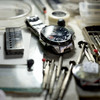
– Did you find a job easily?
– I proved to be talented and was also lucky. I graduated with excellent results, so I became successful in the profession fairly quickly. Perhaps a bit of human weakness played a role in later successes as well; after achieving success, my enthusiasm for watchmaking grew even more.
– How long did you work as a watchmaker, and when did you become a watch expert?
– First, it needs to be clarified what it means to be an expert. I don’t have a forensic expert certification, and as far as I know, only a few people in Hungary do in the field of watches. However, I worked as a watchmaker until I was 45, continuously dealing with watch mechanisms during that time.
– An expert usually doesn’t need practical experience in most fields of life…
– But it certainly helps! I no longer repair or assemble watch mechanisms, but for decades that was my profession, and such experience cannot be replaced. Eventually, however, I was removed from that work. In the 1990s, my employer decided that I should work as a manager. Afterwards, I still took on special projects at home as a hobby, and of course, for money as well.
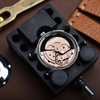
– So why did you finally give up the hobby?
– My wife had the final word. Sometime in the late 1990s, around the holidays, my wife was tidying up at home and simply removed the watchmaker’s bench from the living room. She said it was just in the way, and besides, why keep it… Since then, I no longer work on watches at home.
– Don’t you miss it?
– Of course! The passion remains, since for decades I dealt with watches and movements even more closely than I do now. Much experience and learning at home, some study in Switzerland as well, but the knowledge gained over the years is now used for other purposes. And nowadays, I mostly travel to Switzerland for business.
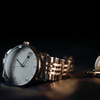
– We are surrounded by million-forint watches, but what would you recommend to someone walking in from the street who wants to buy a valuable, beautiful watch for just a few hundred thousand forints?
– The question is very imprecise, because “beautiful” and “good” mean different things to different people. But if we imagine a father supporting three children on a middle income, saving for years for a mechanical watch, meaning his financial situation is limited, we can still recommend a watch where the price-to-value ratio is right, and behind it lies history, meaning, and authenticity. Some brands are more recognized but technically rank lower, while others give even more than what they cost. If one can afford it, from around 300,000 forints, it is possible to get a watch that even his grandchild could wear one day.
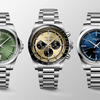
– And what do you get for that amount?
– In Swiss terminology: a true Swiss watch. Sapphire crystal, ensuring it remains scratch-free over time; a Swiss movement hermetically sealed in its case, so you don’t have to worry about a little water; a solid steel case, not just plated; and as I mentioned, historically authentic, the result of decades of development. Such a piece is already available for 300–400 thousand forints.
– And if even that amount is too high?
– In that case, I wouldn’t recommend Andrássy Avenue, but we also have several specialist watch stores where mechanical watches can be found for less.
At this point, the conversation turned to beauty, but what is “beautiful” and what is “good” cannot be judged objectively. We did not delve into the relativity of beauty, but Gábor Orosz illustrated the difference between “good” and “good” with examples. He took a break and returned with two watches. Let’s leave the brands aside, as the focus was not on the movements. Both watches had metal bracelets, which at first glance looked similar to an untrained eye. On one, the usual pins can be removed—screws and a small “tube” hold the links together. Removing these is a bit tricky, so it’s best to leave it to a professional to adjust the bracelet to your wrist size. On the other bracelet, almost invisible joints hide tiny buttons, and the links, just a few millimeters, feature unparalleled mechanics. A small “lever” pops out when pressed with a fingernail, but doesn’t fall out, and instantly separates two links. This is “magic,” which doesn’t explain what is “beautiful,” but immediately clarifies what is “good.”

– Let’s move on to another delicate topic: what is fashionable in watches?
– In summer, sporty dressing is in fashion, but summer fashion also includes buying a 50-foot yacht. Fashion is not a matter of quality at all. Our relationship with fashion is greatly influenced by our wallet, and the same applies to watches. We like to wear trendy things, for the feeling they give us. In Hungary, few people go off-roading or engage in deep-sea diving, yet they buy serious SUVs and professional sports watches because they want a piece of that lifestyle. However, fewer and fewer people buy expensive watches just to show off; they purchase them primarily for their own enjoyment.

– Ez a tapasztalata, vagyis egyre kevesebben vannak, akik státuszszimbólum miatt vásárolnak órákat?
– Nálunk igazából ki sem alakult ez, bizonyos nációknál sokkal elterjedtebb, hogy az értékeiket kifelé mutogatják, Kelet- és Közép-Európában inkább fedetten gazdagok a tehetősek, a saját örömükre. Magyarországot Nyugatról figyelve kicsit szürkék vagyunk, s szürkék a jómódújaink is. Persze létezik olyan, aki kölcsönből veszi meg a hárommilliós órát, de szerencsére efféle csak ritkán esik meg. Többen vannak, akik az anyagi helyzetükhöz képest jóval visszafogottabbak. Pedig itt biztosan a középút lenne a normális, vagyis hogy mindenki az anyagi lehetőségeihez mérten öltözködik, és annak megfelelő órát választ.
– És más a helyzet a környező országokban?
– A körülöttünk lévő országokban hasonló a helyzet, Szlovákiából is van tapasztalatom, és ez egy poszt-monarchikus egyezés. De ma már az óravilágra is igaz, hogy a ’80-as évektől erősen egymást követjük.
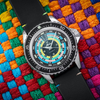
– Is this because more and more brands started significant advertising campaigns?
– One of the best examples is a watch brand desired by almost everyone, which reached its current worldwide popularity for good reason. It already had an excellent technical watchmaking background when, in the 1940s, it was decided to establish the brand in the United States. With very clever marketing tools, they achieved market leadership overseas by the 1950s. It became synonymous with Swiss luxury watches in the United States. In Hungary, it worked a little differently, but only until the 1980s.

– By then, Western culture had already seeped into our country as well…
– At that time, everyone looked at how movie stars dressed, what cars they drove, and what watches they wore, and everyone longed for that lifestyle. The admiration for this brand spread back to Europe due to the desire to emulate the United States. Until then, it could be said that the average European had different consumption habits. Their tastes in the arts and generally were superior. A very narrow consumer segment still maintains this refined taste today, but the big picture has changed, partly due to the strategies of this watch brand, now taught at universities. Consequently, today there are brands in the watch world that have become successful by following exactly the same tactics, and everyone consumes the same way worldwide.
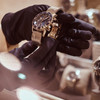
A puding próbája az evés, a legyártott prototípusé pedig amikor felcsatolják a csuklóra: tesztelhetik a modellt működés közben, megvizsgálhatják az esztétikai célú finiselések hatását, például a polírozásét, és dönthetnek a szükséges módosításokról, amelyeket esetleg el kell végezni. A TAG Heuer óránk mostanra a csecsemőkorból a kamaszkorba lépett, és már majdnem készen áll arra, hogy kilépjen a való világba...

